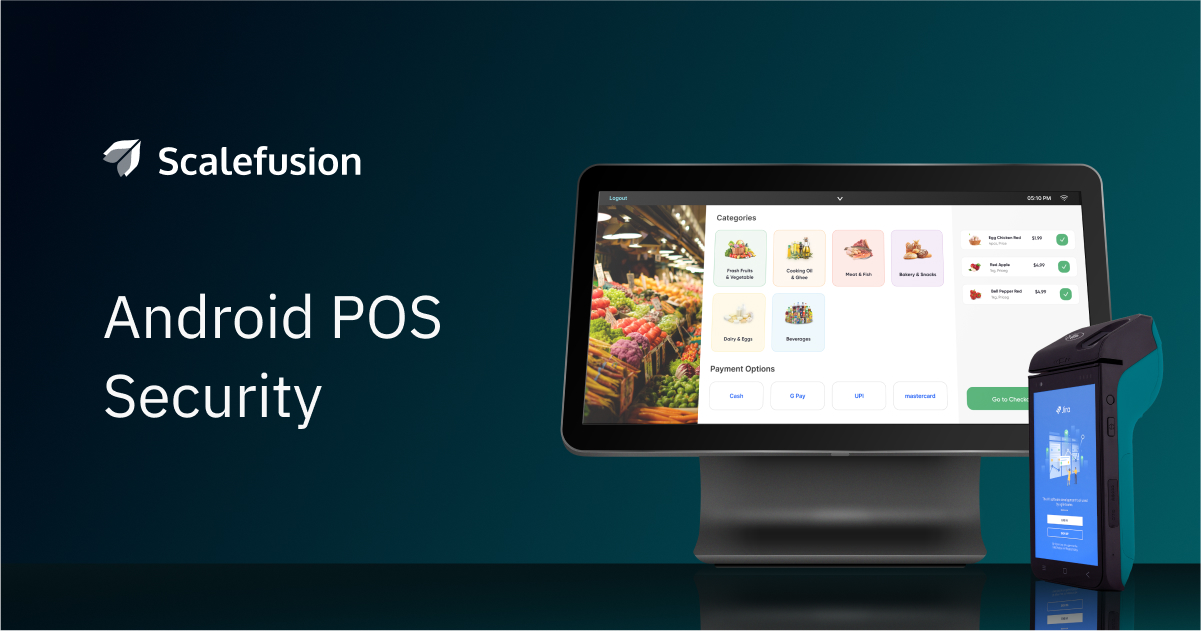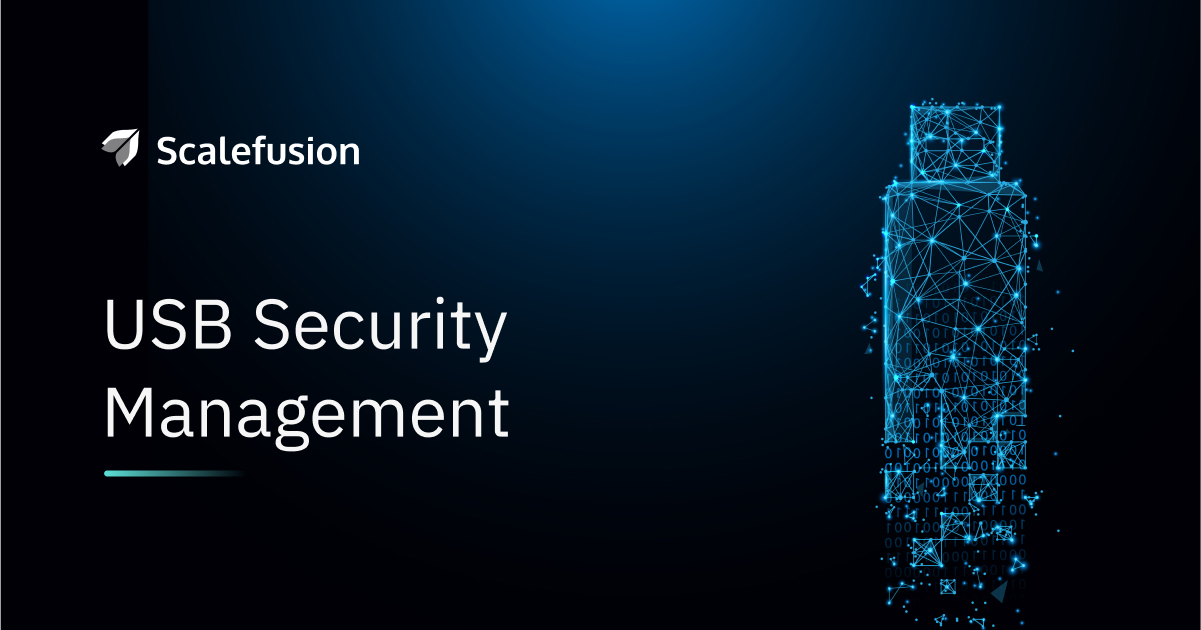Many organizations now allow employees to use personal devices for work through Bring Your Own Device (BYOD) policies. While this boosts productivity and convenience, it also introduces security challenges such as data breaches, unauthorized access, and managing various devices. To address these issues, setting up Identity and Access Management (IAM) along with MDM on BYO devices is essential.
Establishing IAM ensures that only authorized users can access sensitive information, safeguarding company data while simplifying user access across multiple devices. Setting up IAM in a BYOD environment requires careful planning. This blog outlines six necessary practices organizations must follow to establish Identity and Access Management for BYOD.
Understanding IAM for BYOD
In a BYOD workplace, securing corporate data is crucial. Identity and Access Management (IAM) helps manage who can access what information, ensuring that only authorized users can reach sensitive company data, regardless of the device they use.
IAM solutions offer features such as multi-factor authentication (MFA) for added security, conditional access to grant or restrict access based on predefined conditions, and single sign-on (SSO) for a streamlined login experience. These features enhance security and simplify the management of access to corporate data.
IAM also plays a critical role in managing user access throughout employment, from onboarding to offboarding. It ensures that when an employee leaves the company, their access rights are promptly revoked. Additionally, IAM provides records of user activities to help meet regulatory requirements.
By authenticating user identities and managing access permissions, IAM is essential for securing a BYOD setup, offering a balance between robust security and employee flexibility.
How to Set Up IAM for a BYOD Workplace
Here are six essential steps to guide you through the process.
1. Define a BYOD Scope/Policy
Organizations must establish a well-structured and detailed BYOD policy when setting up IAM in a BYOD environment. Implementing IAM becomes ineffective without securing devices,
What is a well-structured and detailed BYOD policy…? A well-structured and detailed BYOD policy should:
- Define the scope of access: Configure data, networks, and applications that employees can access from their devices
- Standardize security protocols: Clearly outline data and device security policies to ensure a consistent security posture across all devices.
- Separate personal and work profiles: Mandate the separation of personal and work profiles on employee devices to protect sensitive corporate data.
- Outline device scope: Specify the operating systems, versions, and types of devices allowed in the BYOD setup.
- Create an employee exit strategy: Clearly state how corporate data will be retrieved and secured when an employee exits the organization.
After creating a robust BYOD policy, the next step is implementing it. Organizations should use a reliable and strong medium, such as an MDM solution like Scalefusion to enforce security policies across all personal devices used for work. Why is MDM essential?
Implementing BYOD policies with an MDM solution enables organizations to enforce robust security policies uniformly across all personal devices used for work. With an MDM IT teams can remotely configure settings, enforce strong password policies, and wipe corporate data from lost or stolen devices.
MDM solutions streamline the management of software updates and patches, ensuring all devices are protected against the latest vulnerability threats. They allow secure distribution of work-related applications and ensure the segregation of work and personal data. This protects corporate data while maintaining employee privacy.
Once organizations have secured corporate data on employee devices using an MDM solution, the next step is to secure BYOD access and user identities through identity and access management.
2. Implement MFA for Added Security
Employees use their personal devices for work in a BYOD setup, increasing the chances of security risks and vulnerabilities. To overcome this challenge, organizations must implement multi-factor authentication (MFA).
MFA is a security system that verifies a user’s identity by requiring multiple authentication factors. This adds an extra layer of security beyond just a password, making it more difficult for attackers to gain access to devices or online accounts.
MFA works on the principle of layering multiple security defenses, combining factors such as:
- Fingerprint and retina scans
- Facial recognition
- Dedicated authentication apps
- Hardware tokens
- Smart cards
- Passwords
- PINs
- Answers to security questions
MFA enhances the security of your IAM setup by reducing the risks associated with compromised credentials and limiting the damage caused by phishing and social engineering attacks.
Organizations can also implement adaptive MFA, which maintains security while providing a seamless user experience. Instead of relying solely on passwords, adaptive MFA uses contextual information and business rules to determine which authentication factors to apply based on factors such as:
- Consecutive login failures
- User account
- Device location
- Day of the week
- Time of day
- Operating system
- Source IP address
Regularly review and adjust your MFA settings to adapt to new security challenges and technological advances, ensuring prolonged security.
3. Adopt the Principle of Least Privilege
The risks of unauthorized access, security breaches, malware infections, and insider threats increase when employees use personal devices for work purposes. This necessitates the adoption of the principle of least privilege.
This principle restricts access rights for applications, systems, and processes to only those who are authorized. It creates a balance between usability and security, minimizing the attack surface.
By implementing least privilege access, IAM ensures users have access only to the resources necessary for their specific roles, reducing the potential impact of security risks.
4. Simplify User Login Experience Using Single Sign-On (SSO)
Implementing Single Sign-On (SSO) simplifies the login process by allowing users to access multiple applications and services with a single set of credentials. Integrating SSO into your IAM strategy benefits your organization and its users.
SSO reduces the need for employees to manage multiple passwords, minimizing the risk of password fatigue—a common cause of weak security practices such as password reuse or writing them down. A strong password combined with MFA strengthens overall security while minimizing vulnerabilities.
Additionally, SSO simplifies the user deprovisioning process for IT administrators. A single set of credentials allows them to revoke access to all work apps and data at once when a user leaves the organization, enhancing data security.
To ensure maximum security and efficiency when deploying SSO in a BYOD workplace, pair it with strong authentication measures like MFA. Together, they provide a balance between ease of access and robust protection, meeting the demands of BYOD work environments.
5. Monitor and Audit User Activity
Actively tracking user behavior enables organizations to detect and respond swiftly to suspicious activities such as unauthorized access, data leakage, or malware infections. This proactive approach strengthens security by identifying potential threats in advance and preventing breaches before they escalate.
Beyond security, monitoring user activity helps measure the performance and efficiency of both the IAM solution and the BYOD program. By analyzing access patterns and usage trends, businesses can make informed decisions to enhance system functionality and optimize resource allocation. Regular audits ensure compliance with regulatory standards and promote accountability, fostering a culture of responsible device usage.
Aligning monitoring and auditing practices with your organization’s BYOD policies creates a balance between flexibility and security. It fosters a secure and efficient work environment while safeguarding sensitive data, making it an essential component of a comprehensive IAM strategy.
6. Review and Update Your IAM and BYOD Policies
Establishing a process to regularly review and update your IAM and BYOD policies is key to keeping your organization secure and adaptable. As technology and security threats evolve, your policies must also change to meet new demands. Conduct periodic assessments and audits, and gather feedback from IT, security, legal, and HR teams to identify gaps or areas for improvement in your IAM and BYOD programs.
Engaging key stakeholders ensures that the policies remain aligned with your business needs and comply with regulations. Regular reviews help address emerging threats, optimize system performance, and keep policies relevant. This proactive approach maintains a secure and efficient BYOD environment while supporting the changing needs of your organization and its users.
Set up IAM for BYOD with Scalefusion OneIdP
Scalefusion OneIdP is a robust UEM-integrated IAM solution providing identity and access management along with mobile device management capabilities. It is a comprehensive solution for businesses to manage user identity and access across Android, Windows, and macOS platforms.
With Scalefusion OneIdP, IT administrators have granular control over user access and identity security. Businesses can implement advanced conditional access controls, ensuring that only compliant and secure devices can access corporate resources. Security policies can be enforced based on device status, location, and user context, enhancing overall protection in a BYOD setup.
Scalefusion OneIdP simplifies the login process with Single Sign-On (SSO) and multi-factor authentication (MFA), ensuring secure and efficient access to devices and applications. With centralized management of user identities and endpoint security, Scalefusion makes it easier for organizations to set up identity and access management in a BYOD workplace.



